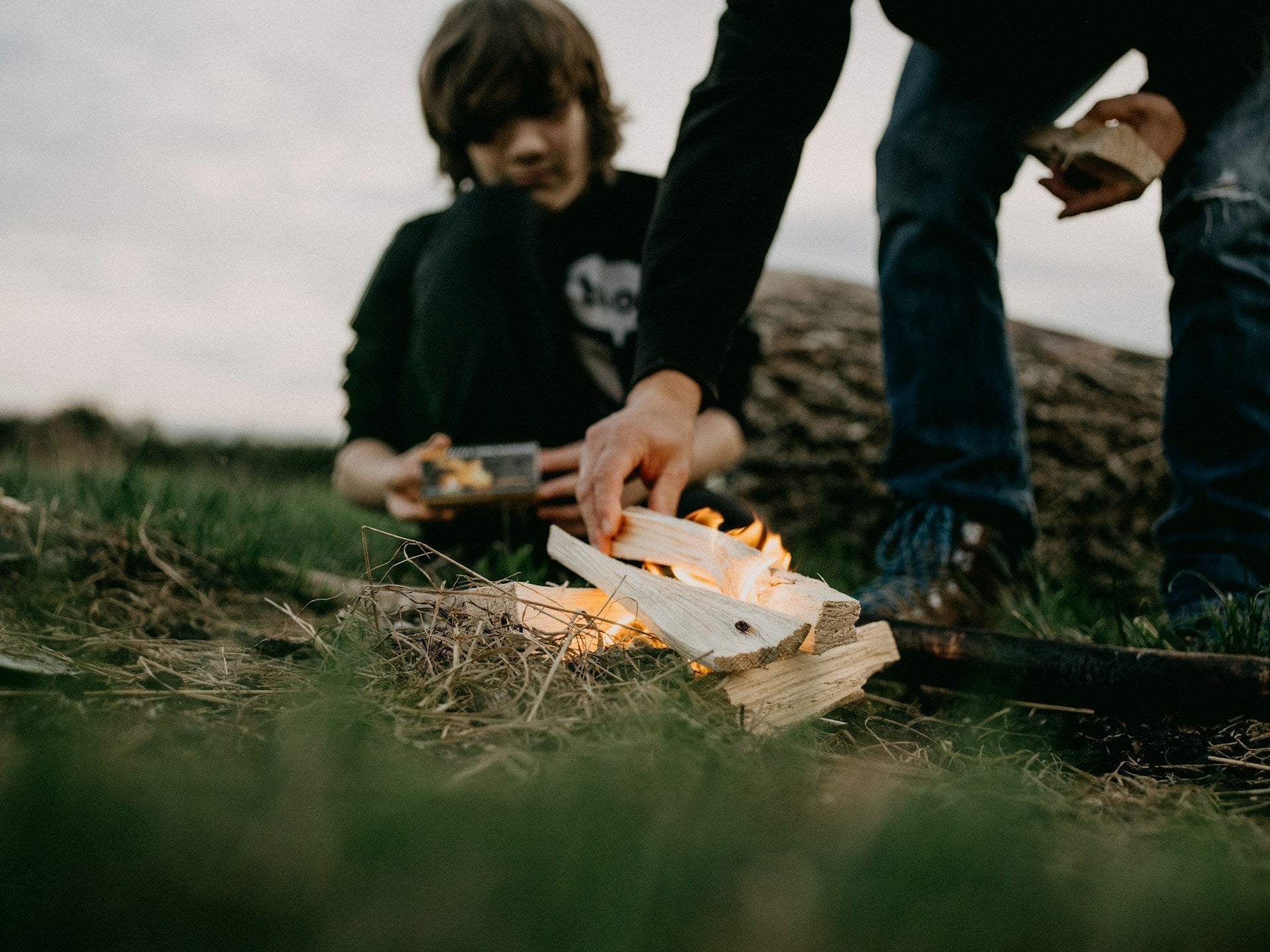Bushcraft, the traditional skill of thriving outdoors using natural resources, has witnessed a significant revival among Australians. Australia presents numerous opportunities and challenges with vast landscapes ranging from dense forests to arid deserts. Mastering bushcraft equips outdoor enthusiasts with invaluable skills, ensuring safety, comfort, and enjoyment during adventures in the wilderness.

Starting a Fire
One essential bushcraft skill is fire-making, which is crucial for warmth, cooking, protection, and signalling. Among the various methods available, friction-based techniques are popular.
- The bow drill, for example, involves using a bow to spin a drill stick rapidly against a fireboard, creating friction that generates heat and eventually an ember.
- Similarly, the hand drill method entails rolling a stick between your palms to produce an ember, although it requires more physical exertion.
- Another reliable fire-starting method is flint and steel, which involves striking a steel striker against flint to produce sparks that ignite char cloth or dry tinder, effective even in damp conditions.
- Additionally, using a magnifying glass to focus sunlight onto a tinder can quickly ignite a fire, although this method depends heavily on clear and sunny weather.
Practising fire safety and management is equally crucial, ensuring fires remain under control and are fully extinguished, especially during dry seasons or fire bans.

Building a Shelter
Shelter-building is another foundational aspect of bushcraft, critical for protection against Australia's varied weather conditions and wildlife.
- The debris hut is a simple yet effective structure constructed using a central ridgepole supported by sturdy branches, with foliage layered to provide insulation and waterproofing.
- A lean-to shelter, created by leaning branches against a natural or constructed horizontal support and covering them with natural materials, offers rapid protection against weather elements.
- An A-frame shelter, formed by angled branches and covered with natural insulation, is ideal for extended stays.
Selecting an appropriate shelter location—preferably elevated, well-drained, and away from hazards—is vital, as is awareness of weather patterns to adapt quickly if conditions change.

Finding Food
Foraging in the Australian wilderness provides abundant opportunities but requires caution and comprehensive knowledge. Common edible plants like Warrigal greens, Lemon Myrtle, Bush Tomatoes, Quandongs, and Native Raspberries can offer valuable nutrition.
Proper identification of edible plants is essential, as is the ability to distinguish them from toxic varieties, particularly when foraging for wild mushrooms like Field mushrooms or Pine mushrooms.
Practising responsible harvesting by taking only what is needed helps maintain ecological balance and respects local regulations. Familiarity with medicinal plants also enhances bushcraft capabilities, providing natural remedies for minor ailments and injuries.
Mastering bushcraft enriches outdoor experiences, enhances personal safety, and fosters a deeper appreciation and understanding of nature. By consistently practising these essential skills, outdoor enthusiasts can ensure safer and more rewarding adventures in Australia's diverse wilderness.

